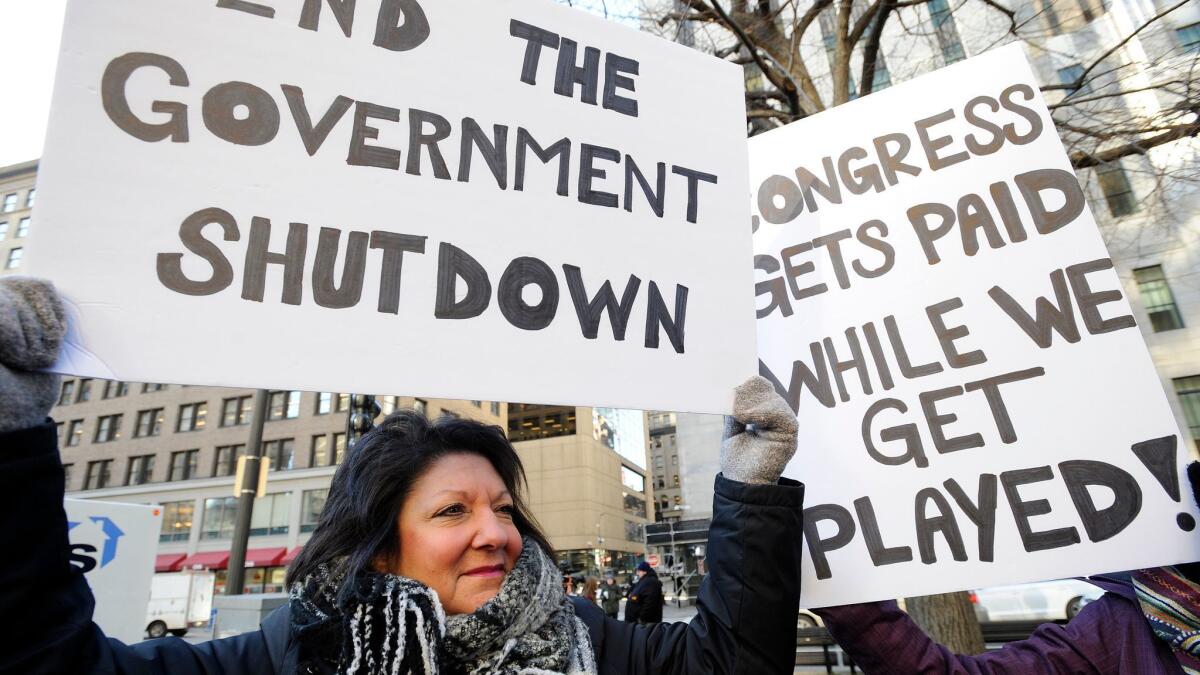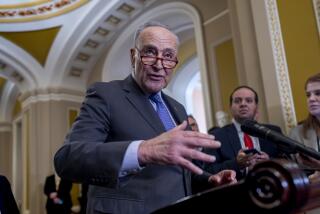This government shutdown is now the longest in U.S. history

Today the partial government shutdown becomes the longest in U.S. history.
And with no vote or negotiations scheduled for this weekend, the battle between President Trump and the new Democratic-led House is likely to keep going.
The lack of a compromise means some 800,000 federal workers missed their paycheck Friday . Of those, about 41,000 are based in California. The state is home to more federal workers — about 144,000 — than any other.
Until 1981, shutdowns weren’t really shutdowns. The federal government kept paying salaries to employees even though Congress hadn’t passed a spending bill. In the 1980s, legal opinions changed and if Congress failed to pass spending bills on time, the government closed down until it did.
It’s been more than 20 years since a federal shutdown reached the three-week mark. That was the 1995-96 shutdown during Bill Clinton’s presidency, touched off by disagreement over how to balance the budget.
Below are recaps of what led to government shutdowns since Clinton’s presidency and how they were resolved:
22 days and counting (Dec. 21, 2018 to present)
President Trump said he would veto any spending bill that did not include $5 billion for a wall on the southern border. Democrats in the House and Senate refused to support funding for a wall.
Result: A continuing impasse.
President: Republican
U.S. Senate: Republican-controlled
U.S. House: Republican-controlled when the shutdown began; now, Democrats have taken control
21 days (Dec. 15, 1995 to Jan. 6, 1996)
The shutdown was touched off by disagreement over how to balance the budget. After absorbing public blame for the impasse, Republicans backed down and accepted Clinton’s budget plan with minor modifications.
Result: Clinton won.
President: Democrat
U.S. Senate: Republican-controlled
U.S. House: Republican-controlled
16 days (Sept. 30 to Oct. 16, 2013)
Tea party conservatives led by Sen. Ted Cruz (R-Texas) engineered a shutdown in an attempt to block funding for parts of Obama’s healthcare law.
Result: A near-total defeat for the GOP.
President: Democrat
U.S. Senate: Democrat-controlled
U.S. House: Republican-controlled
5 days (Nov. 13 to Nov. 19, 1995)
The shutdown began when Clinton vetoed Republican legislation that would have raised Medicare premiums and require him to submit a plan to balance the budget. It ended when Clinton and GOP leaders agreed to fund the government at 75% while negotiations continued; Clinton also agreed to submit a balanced budget plan.
Result: Compromise
President: Democrat
U.S. Senate: Republican-controlled
U.S. House: Republican-controlled
3 days (Jan. 20 to Jan. 23, 2018)
Senate Democrats led by Sen. Charles E. Schumer (D-N.Y.) touched off the shutdown by filibustering a spending deal because it did not include help for “Dreamers,” immigrants who entered the United States illegally as children.
Result: Schumer backed down in exchange for a GOP promise to hold a vote on Dreamers.
President: Republican
U.S. Senate: Republican-controlled
U.S. House: Republican-controlled
1 day (Feb 9 to Feb. 10, 2018)
Sen. Rand Paul (R-Ky.) staged a nine-hour filibuster over the cost of government.
Result: Paul’s time for debate expired, and Congress voted for the spending bills.
President: Republican
U.S. Senate: Republican-controlled
U.S. House: Republican-controlled
More to Read
Get the L.A. Times Politics newsletter
Deeply reported insights into legislation, politics and policy from Sacramento, Washington and beyond. In your inbox three times per week.
You may occasionally receive promotional content from the Los Angeles Times.











